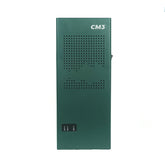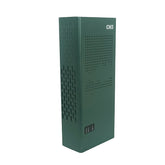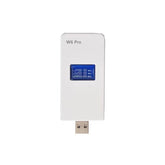The ideal tool for controlling mobile phone communications - radio frequency jammer
Now is the era of the Internet, and the speed of information dissemination is very fast. Although mobile phones have many advantages, sometimes radio frequency jammers are needed to prevent the dissemination of information, so as not to cause major losses. That's what introduces you to Radio Frequency Jammer. With this powerful device, your private information will not be leaked, because the radio frequency jammer can block cell phone signals within a radius of 0-60 meters.
A radio frequency jammer is an ideal tool for controlling cell phone communications. Typically, law enforcement and the military use radio frequency jammers to prevent terrorists from using electronic bombs or disconnecting phone communications in critical situations. Even in public places, people tend to install radio frequency jammers to avoid unpleasant situations caused by cell phone signals
With the help of a radio frequency jammer, you can use it to block radio communications. Radio frequency jammers work by transmitting on the same frequency as the cell phone, thereby blocking communication between the base station and the cell phone. So, if you don't want your information to be leaked, you only need to turn on the radio frequency jammer to ensure a relatively safe environment. It should be noted that the technical characteristics of radio frequency jammers vary, so before purchasing, determine the needs of radio frequency jammers.

When the wireless jammer device is working, do you need to protect it from heat dissipation?
At present, wireless jammers are basically installed in every school examination room. With its help, the stability and order of the examination room can be maintained, and bad things like cheating can be completely eliminated. However, the weather is getting warmer now, and this machine will get hot after a period of use. Consider whether the heat will affect the normal use of the machine. Of course this is not certain. It's just that according to different brands, the cooling capacity will vary greatly. Do you know how the wireless jammer dissipates heat? Previous wireless jammers could only rely on natural temperature to slowly lower their own temperature. But today, the wireless jammers used in the examination room are all upgraded to radiator bases, and powerful cooling fans are installed to dissipate heat. Not only are these fans ultra-quiet, but they also dissipate heat very well. It helps the device to reduce the temperature in time.
In addition, the current schools are generally equipped with air conditioners. In hot weather, the school will turn on the air conditioner or fan to ensure that the examinee's body is cool. At this time, the temperature of the wireless jammer in the room will also decrease. In fact, the wireless jammer is just like a mobile phone, as long as it is turned on and used, it will generate a certain amount of heat. However, it will not cause damage to the equipment. In particular, there is no need to worry about high-quality equipment. Therefore, when choosing a wireless jammer, it is necessary to choose a more reliable company.













